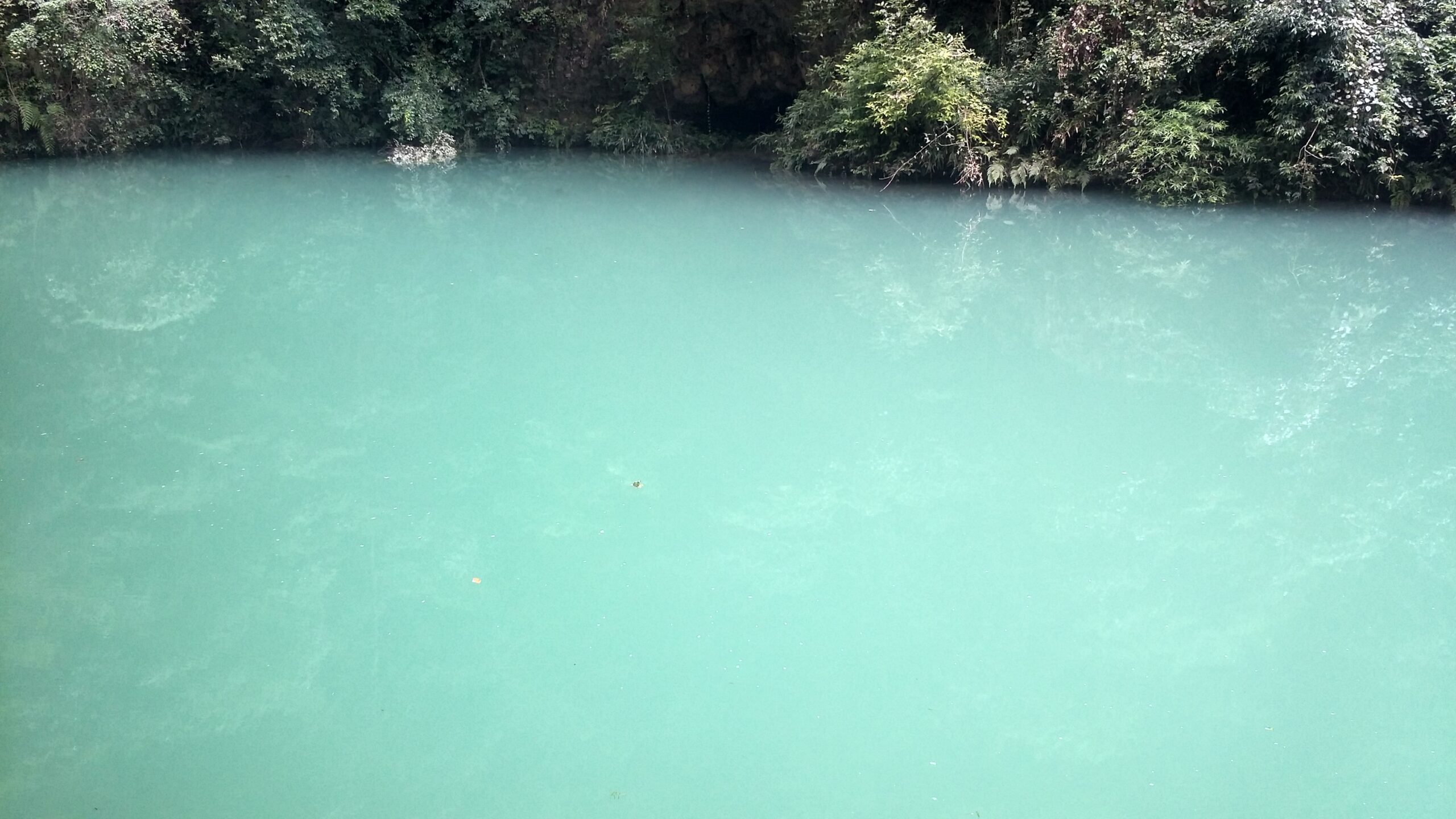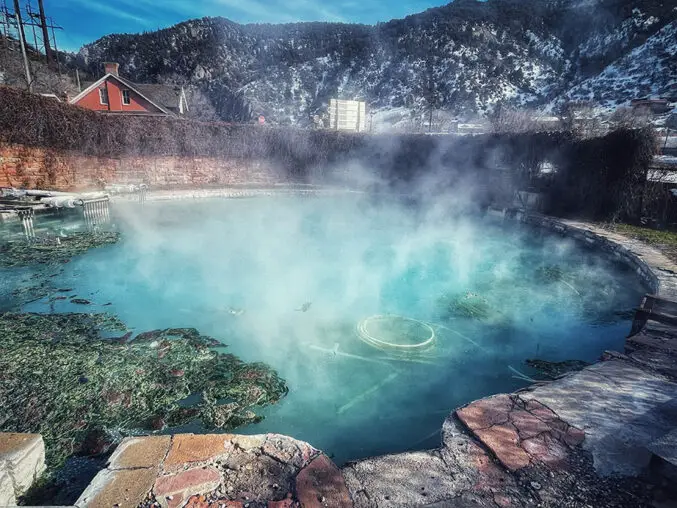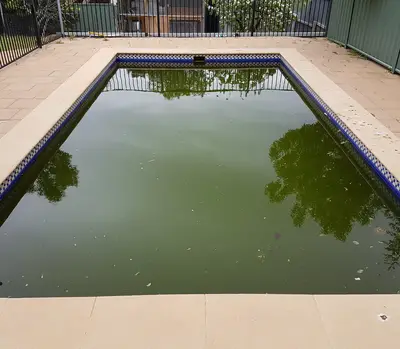
For many, the allure of a crystal-clear, sparkling pool is irresistible. But what happens when that inviting oasis turns murky and cloudy? It’s a dilemma pool-goers often face, leaving them pondering whether it’s safe to take the plunge.
In this comprehensive guide, we’ll explore the world of cloudy pool water, dissecting its causes, potential risks, and how to ensure a safe swimming experience. So, before you decide to dive into that cloudy pool, let’s get to the bottom of this issue.
The Hazards of Swimming in a Cloudy Pool

Cloudy pool water, while not always a red flag, can signal underlying problems that might jeopardize your health and safety. Here’s why you should think twice before taking the plunge:
Illness and Infection
The cloudiness of pool water often hints at an imbalance in critical chemicals, particularly chlorine or other sanitizers.
Chlorine is instrumental in keeping pool water free of harmful bacteria, viruses, and pathogens.
When pool water becomes cloudy, it’s a potential sign that chlorine levels have dipped below the threshold required to neutralize these microorganisms effectively.
Swimming in unsanitized water exposes you to various health risks. From minor skin irritations to more severe conditions resulting from harmful pathogens, the consequences can be quite serious. For instance, bacteria such as E. coli or giardia in the water can lead to stomach cramps, nausea, diarrhea, and discomfort during urination.
Skin, Eye, and Ear Irritations
The chemical balance of a pool extends beyond just chlorine—it encompasses pH levels, alkalinity, and calcium hardness, among others. When these factors are out of sync, cloudy water can result.
Aside from cloudiness, an imbalanced pool can trigger a range of problems, including skin, eye, and ear irritations. Individuals with conditions like asthma may find their symptoms aggravated in such an environment.
Moreover, an imbalanced chemical mix can harm the pool’s physical structure and equipment. Metals in the water can lead to staining, while excessive calcium levels may result in scaling, affecting the pool’s appearance and longevity.
Increased Risk of Injury
Reduced visibility is a primary concern when swimming in a cloudy pool. The murkiness makes it difficult to see the pool’s bottom, which brings several risks.
Swimmers may inadvertently trip over submerged objects or collide with them, potentially causing injuries. Children diving into the water without assessing the depth can make grave mistakes when poor visibility obscures their judgment.
In situations where a swimmer is in distress or has sunk to the bottom, cloudy water can hinder others from noticing and providing timely assistance.
Unmasking the Culprits Behind Cloudy Pool Water
Understanding the causes of cloudy pool water is key to resolving the issue and ensuring a safe swimming experience.
Chemical Imbalance
Cloudy pool water often results from chemical imbalances, with insufficient or excessive levels of crucial elements.
One of the most common causes is improper chlorine levels. Chlorine is essential for maintaining clean, clear water. An insufficient amount can allow contaminants to thrive, clouding the water.
Conversely, excessive chlorine can lead to the formation of chlorine byproducts, contributing to haziness.
Another critical chemical is pH levels, which measure water’s acidity or alkalinity. Imbalanced pH levels can trigger cloudiness by reducing the efficiency of chlorine and causing calcium carbonate precipitation.
High calcium levels are another factor that can lead to cloudy pool water. This excessive calcium can cause scaling and hinder water clarity.
Equipment Malfunction
Equipment malfunctions, such as a clogged or faulty filter, can also contribute to cloudy pool water.
The pool filter’s primary role is to remove impurities and contaminants from the water, ensuring clarity. If the filter isn’t functioning correctly, particles and impurities remain in the water, causing cloudiness. Regular maintenance and cleaning of the pool’s filter system are essential to prevent this issue.
Debris, including leaves and dirt, can also make the water appear cloudy. The use of a pool cover and skimmer can effectively reduce debris entering the pool, maintaining water clarity.
Algae and Bacteria
Biological elements, particularly algae and bacteria, can significantly contribute to cloudy pool water.
Algae can multiply rapidly and cloud the pool if there’s inadequate sanitization or an imbalance in water chemistry. Apart from making the pool unappealing, algae can create a slippery surface, posing a danger to swimmers.
Cloudy water can also be a breeding ground for bacteria and other harmful microorganisms, presenting potential health risks to swimmers. These microorganisms can cause infections, rashes, and other illnesses upon contact with the skin or ingestion.
Calcium and Water Hardness
Calcium levels and water hardness play a vital role in pool water clarity. High calcium levels can lead to cloudy water and scaling. Regular testing and adjustment of calcium hardness levels are essential to maintain clear water.
Using a water testing kit can help determine the appropriate calcium and hardness levels, ensuring a balanced pool. Additionally, a pool shock treatment can eliminate existing calcium buildup, preserving the pool’s sparkling cleanliness.
Oils and Personal Care Products
The presence of oils and personal care products from swimmers can also contribute to cloudy pool water. Sunscreens, lotions, and natural body oils can accumulate in the pool, reducing water clarity.
To minimize these effects, encourage guests to rinse off before entering the pool. Regular maintenance, including the use of an automatic pool cleaner and the addition of a pool clarifier, can help break down these oils and improve water clarity.
Preventing and Treating Cloudy Pool Water

While cloudy pool water can be a nuisance, it’s not the end of the world. Here are steps to tackle the issue and get your pool back to crystal-clear conditions:
Treatment
- Test the Water: Utilize a pool testing kit to check pH levels, chlorine levels, alkalinity, and calcium hardness. These tests provide insight into any imbalances.
- Adjust Chemical Levels: Based on test results, adjust the pool’s chemical levels. This may involve adding chlorine, pH modifiers, or other chemicals to restore balance.
- Shock the Pool: Consider giving your pool a “shock” treatment using pool chlorine or a non-chlorine shock product. This helps eliminate bacteria, algae, and restores water clarity.
- Use a Pool Clarifier: A pool clarifier binds tiny particles, making them easier for the filter to capture.
- Improve Filtration: Ensure the pool filter is clean and operating optimally. Running the filter continuously until clarity returns can be beneficial.
- Brush and Vacuum: Brush the sides and bottom of the pool to remove settled debris, followed by thorough vacuuming.
- Avoid Overcrowding: Excessive swimmers can introduce oils, lotions, and other contaminants that contribute to cloudiness.
Prevention
Prevention is always better than cure. Implement these preventive measures to maintain a consistently clear pool:
- Regular Testing: Test the pool’s water regularly, ideally on a weekly basis, and adjust chemicals as needed.
- Maintain the Filter: Clean and backwash the pool filter regularly. Ensure you’re using the appropriate filter and pump size for your pool’s volume.
- Regular Cleaning: Brush and vacuum the pool at least once a week to remove debris and contaminants that could lead to cloudiness.
- Shock the Pool: Regularly shock your pool, typically once a week during peak usage or after heavy use, to eradicate bacteria and contaminants.
- Maintain Proper Water Levels: Ensure your pool’s water level is optimal. Low water levels can affect the efficiency of the skimmer and filter system.
- Avoid Phosphate Build-Up: Phosphates can serve as a food source for algae. Use phosphate removers if necessary to prevent algae growth.
- Educate Swimmers: Encourage swimmers to shower before entering the pool and to avoid bringing lotions or oils that can contribute to water cloudiness.
- Cover the Pool: When the pool is not in use, especially in areas with many trees or during windy days, covering it can prevent debris and contaminants from entering the water.
By consistently implementing these preventative measures and adhering to a regular pool care routine, you can significantly reduce the likelihood of your pool water turning cloudy.
Conclusion
With this comprehensive understanding of cloudy pool water and the tools to address it, you can confidently make the call – whether to dive in or stay out. Ultimately, a well-maintained, crystal-clear pool will provide the safe and enjoyable swimming experience you desire.
So, the next time you gaze upon a cloudy pool, armed with this knowledge, you can decide whether it’s time to make a splash or wait for clearer waters. The choice is yours, and now you have the information to make it wisely. Happy swimming!









